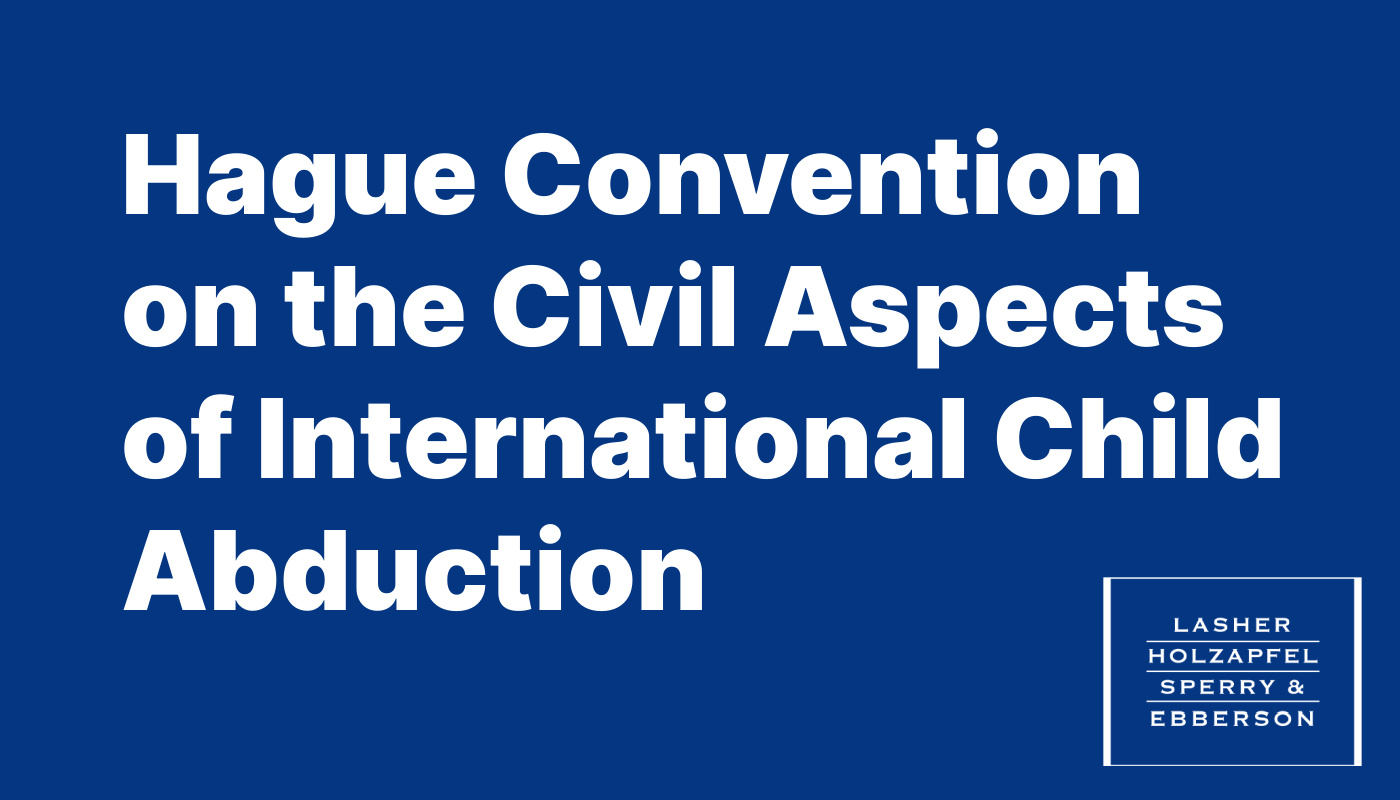Hague Convention on the Civil Aspects of International Child Abduction

Posted on February 26, 2025 by Faye Washburn
The Hague Convention on the Civil Aspects of International Child Abduction is an international treaty that established a uniform set of laws for countries with respect to child abduction. Countries that are signors to the Convention agree to follow an established legal process to recover and return children located in their country who may have been abducted from their home country. The Convention provides a legal framework for ensuring the prompt return of wrongfully removed children through cooperation between signatory nations to uphold and facilitate custody rights and prevent international parental child abduction.
This blog explores the key principles, legal mechanisms, and real-world implications of the Convention. The importance of the Convention in an international parental child abduction is that other countries may not recognize an international custody order, requiring a parent seeking return of their child to engage the affirmative relief of the Convention.
The primary goal of any Hague Convention return action is not to solve underlying custody disputes between parties, which are often present, but to determine whether a child was abducted from the country that is their habitual residence, and whether the child should be returned there.
Habitual Residence: When determining where a child’s habitual residence is, courts will look at factors such as how long the child has lived in a particular country, their connections to the community, if they are enrolled in school, have friendships, medical providers, and their language fluency. Establishing habitual residence can be especially difficult for children who move frequently.
What are some defenses available in a Hague Convention Child Return case?
While the Convention is intended to facilitate the return of children to their country of habitual residence, there are defenses that courts may consider to prevent a return depending on the circumstances leading up to the removal. The most common defenses include:
Grave Risk of Harm: Under Article 13(b) of the Convention, a court may refuse to return the child if doing so would expose them to a grave risk of harm, whether physical or psychological. This may apply in cases where domestic violence, child abuse, neglect, or other serious threats to the child’s well-being are present. If presented on an emergent basis, the court will carefully evaluate the severity of any potential harm and consider whether ameliorative measures can be put in place by the country seeking return to mitigate the potential harm. These measures can include actions such as supervised visitation, protective orders, or counseling. They are intended to alleviate concerns of potential harm both for the parents, and the court.
Mature Child Objection: Another defense available under the Convention is whether the child is of sufficient age and maturity, and that child objects to the return. Courts may take the child’s wishes into account, especially if they are old enough to understand the implications of the decision. A mature child’s objection does not automatically bar the return, but it is among the many factors a court will consider.
What are some practical tips for parents facing a cross-border child custody dispute?
The most important action a parent can take if they are facing an international child abduction is to seek experienced legal counsel with expertise in international family law matters, specifically Hague return trials. An experienced attorney can help to guide you through the legal nuances of the situation and help you to understand your options.
Additionally, it is critical for parents to keep a detailed record of all documentation and evidence that you think would be relevant to establishing your child’s habitual residence.
A preventative measure that parents can take is to enroll your child in The Children’s Passport Issuance Alert Program (CPIAP), which is a critical tool in preventing international child abduction. When you enroll your child, you are alerted if their other parent submits a U.S. passport application for them.
If the child already has a passport, you can require the court, or a neutral third party to hold the child’s passport and only release it with written authorization from both parents.
Conclusion
Navigating an international child abduction, and subsequent Hague Convention return trial is a daunting and often complicated process for parents. However, with the right legal guidance and understanding of the process, parents can better protect their rights and the rights of their children.
If you have questions about cross-border child custody issues, contact a family law attorney at Lasher Holzapfel Sperry & Ebberson, PLLC.
